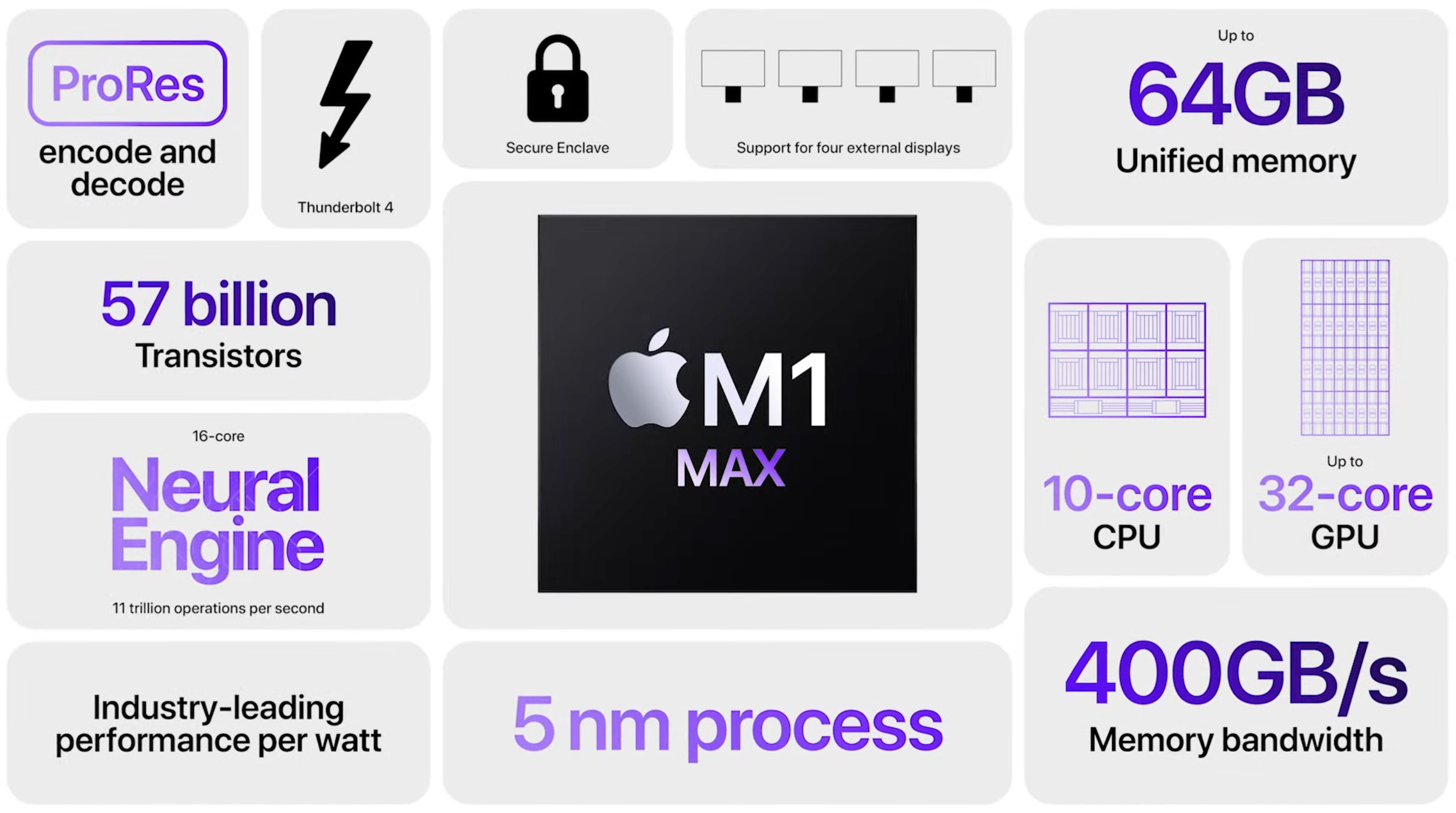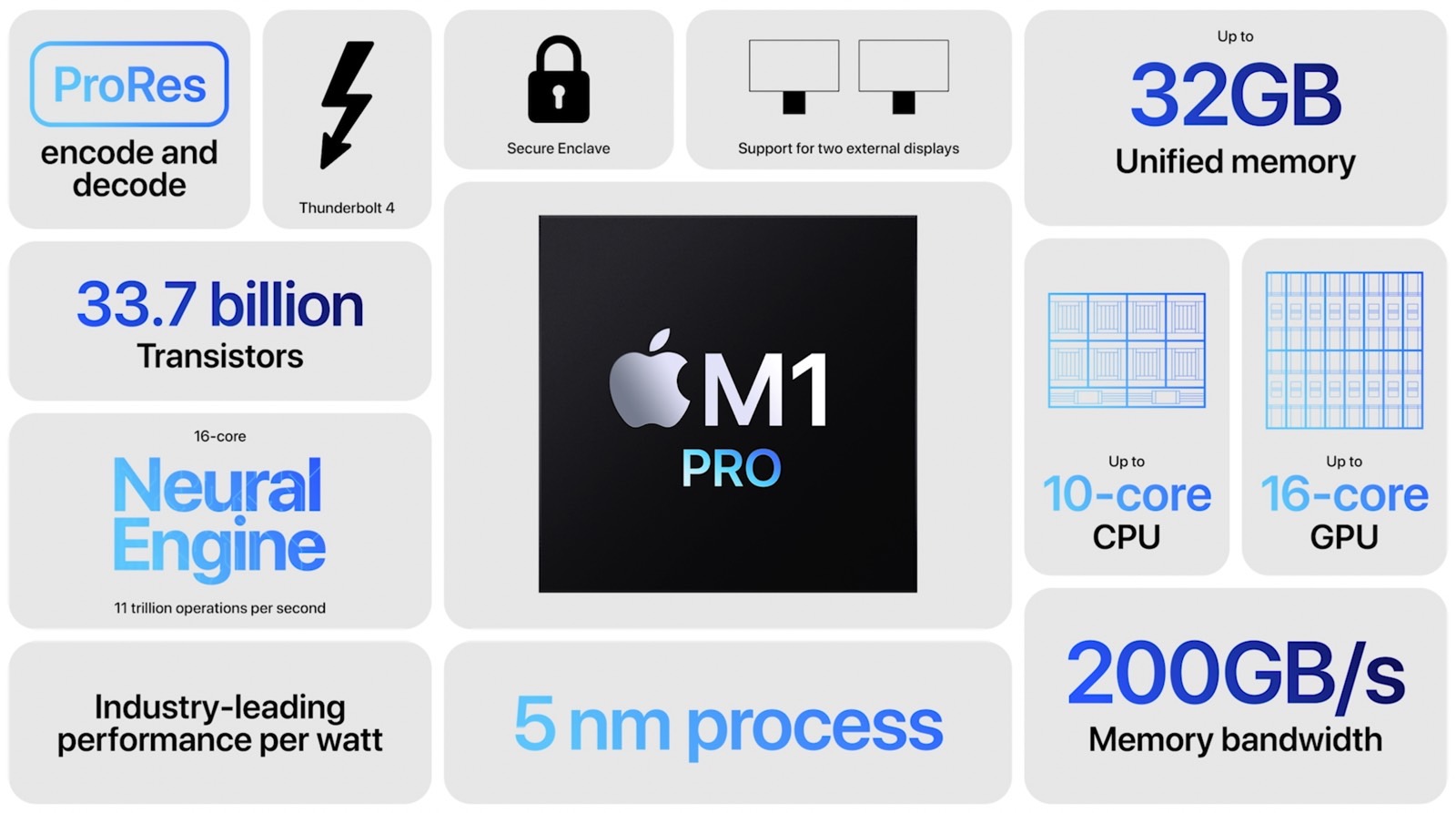Monster MacBook Pro Review Highlights Incredible M1 Max Performance
Apple's new MacBook Pro laptops with the M1 Max and M1 Pro are shipping to buyers who preordered them online. The initial stock already sold out.
If you've waited for the reviews to come out to decide whether you need a 2021 MacBook Pro — and what M1 SoC to choose — you're looking at shipping estimates reaching December for some of the models. That's because the reviews will show you that the M1 Max and M1 Pro offer tremendous power gains, if performance is your main concern with the new MacBook Pro. The laptops will easily outperform their rivals in most areas, including Intel and AMD machines. And performance outclasses even desktop-grade PCs, even approaching server-grade configurations in some tests.
Probably the best MacBook Pro review for users who prioritize performance comes from AnandTech. It's the kind of in-depth analysis we keep seeing year after year with Apple's System-on-Chip designs that power the iPhone, iPad, and Mac. And it's the kind of review that will make Intel and its anti-MacBook campaign look even worse than it already does.
The M1 Max and M1 Pro review looks at the CPU, memory, and GPU performance, focusing on the best version of the MacBook Pro chips, the M1 Max.
M1 Max and M1 Pro bring massive memory gains to the MacBook Pro
AnandTech explains in its review that Apple has maintained the CPU design similar to the M1 for both the M1 Max and M1 Pro. But while the CPU might be the same, it features eight Firestorm performance cores and two Icestorm efficiency cores. The CPU cores peak at 3228 MHz, but the frequency varies depending on how many cores are engaged.
The first significant MacBook Pro performance upgrade AnandTech identified is the memory bandwidth and interfaces:
One large feature of both chips is their much-increased memory bandwidth and interfaces – the M1 Pro features 256-bit LPDDR5 memory at 6400MT/s speeds, corresponding to 204GB/s bandwidth. This is significantly higher than the M1 at 68GB/s, and also generally higher than competitor laptop platforms which still rely on 128-bit interfaces.
The memory upgrade is even more impressive on the M1 Max:
Apple also doubles up on the memory interfaces [not just the number of GPU cores], using a whopping 512-bit wide LPDDR5 memory subsystem – unheard of in an SoC and even rare amongst historical discrete GPU designs. This gives the chip a massive 408GB/s of bandwidth – how this bandwidth is accessible to the various IP blocks on the chip is one of the things we'll be investigating today.

Apple's new M1 Max SoC for MacBook Pro.
The big GPU upgrade
The GPU is another massive upgrade for the M1 Max and M1 Pro MacBook Pro laptops. "No PC processor has ever shipped with such a powerful GPU integrated into the main SoC," the review team writes in its GPU section.
The memory upgrade also plays a significant role in GPU performance:
[...] M1 Max has a 512-bit interface, four-times the size of the original M1's 128-bit interface. To be sure, it's always been possible to scale up LPDDR in this fashion, but at least in the consumer SoC space, it's never been done before. With such a wide interface, Apple is able to give the M1 Max 400GB/sec (technically, 409.6 GB/sec) of memory bandwidth, which is comparable to the amount of bandwidth found on NVIDIA's fastest laptop SKUs.
The review mentions that gaming is still a weak spot for the MacBook Pro. But not because the GPUs can't handle it. It's more of an availability problem on macOS, which puts MacBook Pro gamers at a disadvantage.

Apple's new M1 Pro SoC for MacBook Pro.
Intel will have a tough time dismissing the new MacBook Pros
AnandTech's conclusions are clear. The M1 Max and M1 Pro are unlike anything available in the industry right now:
The M1 Pro and M1 Max change the narrative completely – these designs feel like truly SoCs that have been made with power users in mind, with Apple increasing the performance metrics in all vectors. We expected large performance jumps, but we didn't expect the some of the monstrous increases that the new chips are able to achieve.
Again, it's the memory upgrades that outclass other devices:
On the memory side, Apple has scaled its memory subsystem to never before seen dimensions, and this allows the M1 Pro & Max to achieve performance figures that simply weren't even considered possible in a laptop chip. The chips here aren't only able to outclass any competitor laptop design, but also competes against the best desktop systems out there, you'd have to bring out server-class hardware to get ahead of the M1 Max – it's just generally absurd.
The 2021 MacBook Pro models deliver "immense leaps in performance for content creation and productivity workloads which rely on GPU acceleration." This will appeal to professionals who need the kind of advancements that the new chips can offer:
[It] seems that Apple knows the typical MacBook Pro power users, and has designed the silicon around the use-cases in which Macs do shine. The combination of raw performance, unique acceleration, as well as sheer power efficiency, is something that you just cannot find in any other platform right now, likely making the new MacBook Pro's not just the best laptops, but outright the very best devices for the task.
The full MacBook Pro M1 Max and M1 Pro chip review is available at this link.
